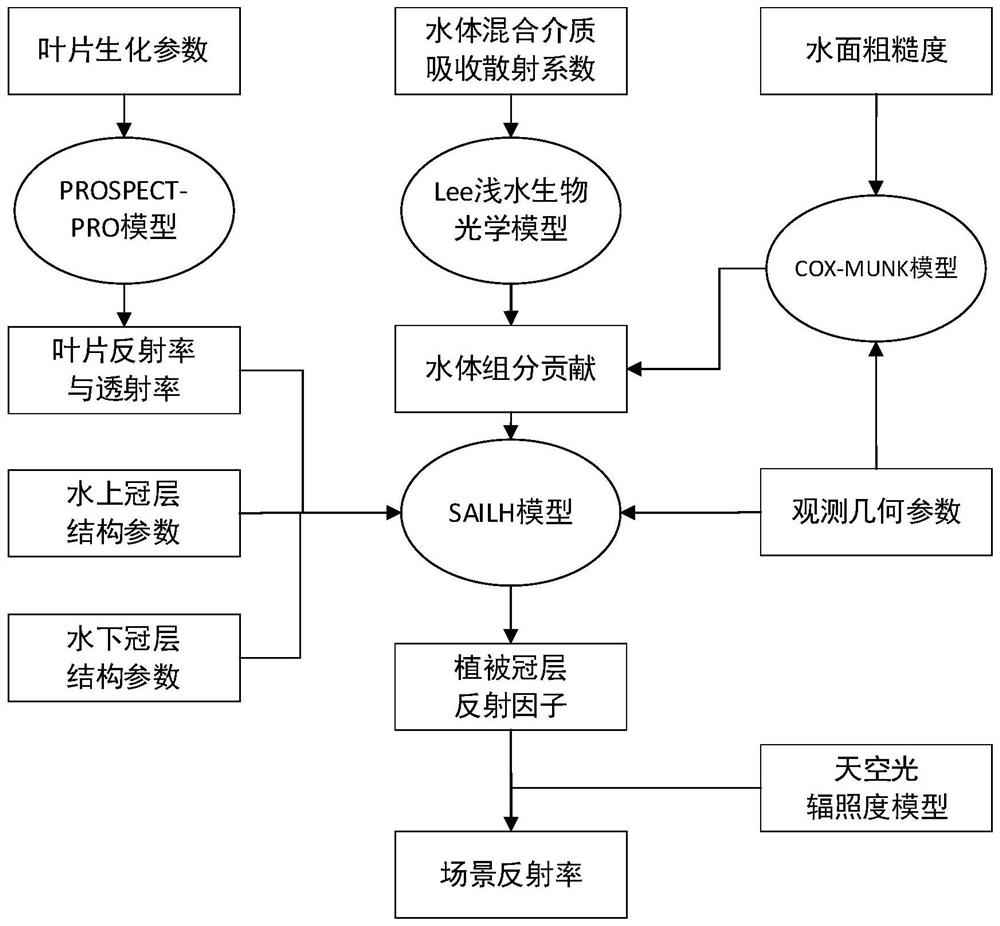Wetland aquatic vegetation canopy total reflection spectrum radiation transfer modeling method
A technology of aquatic vegetation and spectral radiation, which is applied in complex mathematical operations, climate sustainability, design optimization/simulation, etc., can solve problems such as low simulation accuracy, narrow spectral bands, and insufficient consideration of water background, so as to improve simulation accuracy Effect
- Summary
- Abstract
- Description
- Claims
- Application Information
AI Technical Summary
Problems solved by technology
Method used
Image
Examples
Embodiment Construction
[0060] In order to better illustrate a kind of wetland aquatic vegetation canopy total reflection spectral radiation transfer modeling method involved in the present invention, the model of the present invention was used to test and verify, and good results were obtained, and the specific implementation method is as follows:
[0061] (1) Input the leaf biochemical parameters into the PROSPECT-PRO model to calculate the reflectance and transmittance spectral data of a single leaf;
[0062] (2) Input the vegetation canopy parameters, observation geometric parameters and leaf reflectance into the SAILH model, and calculate the absorption, extinction, attenuation and scattering coefficients of the main vegetation canopy by combining the proportion of direct sky light and scattered light with the change of wavelength bands. , and then the vegetation canopy includes four reflection factors from the sun to the observation direction, the sun to the diffusion direction, the diffusion to...
PUM
 Login to View More
Login to View More Abstract
Description
Claims
Application Information
 Login to View More
Login to View More - R&D
- Intellectual Property
- Life Sciences
- Materials
- Tech Scout
- Unparalleled Data Quality
- Higher Quality Content
- 60% Fewer Hallucinations
Browse by: Latest US Patents, China's latest patents, Technical Efficacy Thesaurus, Application Domain, Technology Topic, Popular Technical Reports.
© 2025 PatSnap. All rights reserved.Legal|Privacy policy|Modern Slavery Act Transparency Statement|Sitemap|About US| Contact US: help@patsnap.com



